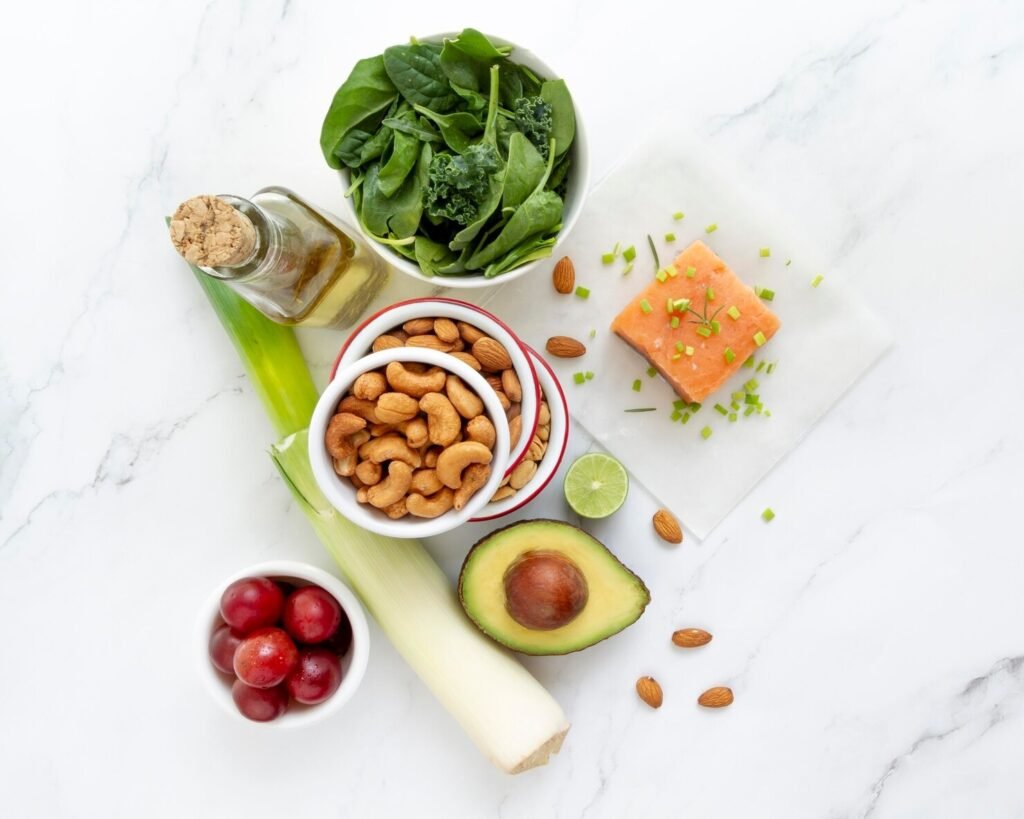“But where do you get your protein?” It’s the question every vegan has heard a thousand times – often asked with genuine concern, sometimes with a hint of skepticism. The truth? Getting ample protein on a vegan diet is not only achievable but incredibly delicious and surprisingly diverse! Forget the myth that plant-based eating means sacrificing muscle, energy, or satiety.
In fact, a well-planned vegan diet, rich in plant-based protein sources, offers a wealth of benefits beyond just meeting your macros. We’re talking about more fiber, less saturated fat, a bounty of vitamins, minerals, and antioxidants, and a lighter footprint on the planet.
If you’re new to veganism, considering the switch, or just looking to diversify your protein intake, you’ve come to the right place. This comprehensive guide will explore the best plant-based protein sources for vegans, helping you build a strong, healthy, and vibrant plant-powered lifestyle. Prepare to be amazed by the sheer abundance of high protein plant based sources available!
Why Choose Plant-Based Protein? Beyond Just Being Vegan-Friendly
Before we dive into the delicious details, let’s briefly touch upon why plant-based protein is so fantastic. Protein is a critical macronutrient, essential for building and repairing tissues, making enzymes and hormones, and supporting immune function. While animal products are traditionally seen as the go-to for protein, plants offer:
- Fiber: Almost all plant proteins come packed with dietary fiber, crucial for digestive health, blood sugar regulation, and feeling full.
- Lower Saturated Fat & Cholesterol-Free: Plant sources are naturally free of cholesterol and often lower in saturated fat, beneficial for heart health.
- Micronutrient Powerhouses: Many plant proteins are loaded with vitamins, minerals, and phytonutrients that support overall well-being.
- Sustainability: Choosing plant-based options generally has a significantly lower environmental impact regarding land, water, and greenhouse gas emissions.
Now, let’s explore the stars of the show!
The Best Plant-Based Protein Sources for Vegans: Your Essential List
Get ready to fill your pantry and plate with these incredible vegan protein sources.
1. Legumes: The Protein Powerhouses
Legumes are the undisputed champions of plant-based protein. They’re affordable, versatile, and incredibly nutritious.
- Lentils:
- Protein Content: About 9g per ½ cup cooked.
- Why They’re Great: Packed with fiber, iron, folate, and manganese. They cook quickly and absorb flavors beautifully.
- How to Enjoy: Soups, stews, curries, “meatloaf,” salads, or as a hearty side dish. Red lentils can even disappear into sauces!
- Chickpeas (Garbanzo Beans):
- Protein Content: About 7.5g per ½ cup cooked.
- Why They’re Great: Rich in fiber, iron, folate, and phosphorus. They have a firm texture and mild, nutty flavor.
- How to Enjoy: Hummus, roasted for a crunchy snack, in curries, salads, stews, or mashed for “chickpea salad” sandwiches. Aquafaba (the liquid from canned chickpeas) can even be whipped into meringues!
- Black Beans:
- Protein Content: About 7.5g per ½ cup cooked.
- Why They’re Great: An excellent source of fiber, iron, magnesium, and antioxidants.
- How to Enjoy: Tacos, burritos, chili, soups, salads, or even blended into brownies for added moisture and nutrition.
- Kidney Beans:
- Protein Content: About 7.7g per ½ cup cooked.
- Why They’re Great: Similar to black beans in nutritional profile, offering fiber, iron, and folate.
- How to Enjoy: Chili, stews, salads, or as a robust side dish.
2. Soy Products: Versatility King
Soybeans are a complete protein source, meaning they contain all nine essential amino acids. They’re also incredibly versatile.
- Tofu:
- Protein Content: Varies by firmness, but firm tofu is about 10g per ½ cup.
- Why It’s Great: A complete protein, good source of calcium (especially calcium-set varieties) and iron. It’s a blank canvas, absorbing marinades and spices.
- How to Enjoy: Sautéed, baked, grilled, scrambled (for “tofu scramble”), blended into smoothies or sauces, or crumbled into stir-fries.
- Tempeh:
- Protein Content: Around 19g per ½ cup.
- Why It’s Great: Made from fermented soybeans, it’s a complete protein and contains prebiotics, beneficial for gut health. Has a nuttier, firmer texture than tofu.
- How to Enjoy: Marinated and fried/baked, crumbled into chili or tacos, in stir-fries, or on sandwiches.
- Edamame:
- Protein Content: About 8.5g per ½ cup shelled.
- Why It’s Great: Young soybeans, eaten whole or shelled. A complete protein, rich in fiber, vitamin K, and folate.
- How to Enjoy: Steamed and sprinkled with salt as a snack, added to salads, stir-fries, or grain bowls.
- Soy Milk/Yogurt:
- Protein Content: About 7-8g per cup (milk) or serving (yogurt).
- Why It’s Great: A convenient way to add protein to breakfast or snacks. Often fortified with calcium and vitamin D.
- How to Enjoy: Cereal, smoothies, coffee, sauces, or as a standalone drink.
3. Seitan: The “Wheat Meat”
- Protein Content: An impressive 18-20g per 3-ounce serving.
- Why It’s Great: Made from vital wheat gluten, it has a remarkably chewy, meat-like texture and is extremely high in protein.
- How to Enjoy: Marinated and grilled, sliced into stir-fries, used in sandwiches, roasts, or any dish where you’d typically use meat. Note: Not suitable for those with gluten intolerance.
4. Grains & Pseudograins: More Than Just Carbs
While often thought of as carb-heavy, certain grains and pseudograins are excellent high protein plant based sources.
- Quinoa:
- Protein Content: About 8g per cup cooked.
- Why It’s Great: A complete protein, gluten-free, and rich in fiber, magnesium, iron, and manganese.
- How to Enjoy: As a base for grain bowls, in salads, a side dish, or even for breakfast porridge.
- Oats:
- Protein Content: About 5g per ½ cup dry.
- Why It’s Great: A good source of complex carbs, fiber (especially beta-glucan), iron, and magnesium.
- How to Enjoy: Oatmeal, overnight oats, in granola, baked goods, or blended into smoothies.
- Spelt/Farro/Teff: Ancient grains that offer more protein than common wheat or brown rice.
- Protein Content: Roughly 4-6g per ½ cup cooked.
- Why They’re Great: Nutty flavors, chewy textures, and good sources of fiber and minerals.
- How to Enjoy: In salads, pilafs, stews, or as a hearty side.
5. Nuts & Seeds: Tiny Treasures of Nutrition
Don’t underestimate these small but mighty protein providers!
- Hemp Seeds (Hemp Hearts):
- Protein Content: About 9-10g per 3 tablespoons.
- Why They’re Great: A complete protein, rich in omega-3 and omega-6 fatty acids in an ideal ratio, magnesium, and zinc.
- How to Enjoy: Sprinkled on salads, oatmeal, smoothies, yogurt, or blended into dressings.
- Chia Seeds:
- Protein Content: About 5g per 2 tablespoons.
- Why They’re Great: Contain all nine essential amino acids (a complete protein), loaded with fiber, omega-3s, calcium, and phosphorus.
- How to Enjoy: Chia pudding, mixed into smoothies, as an egg replacer in baking, or sprinkled on virtually anything.
- Almonds:
- Protein Content: About 6g per ¼ cup (approx. 23 almonds).
- Why They’re Great: Good source of vitamin E, magnesium, and healthy fats.
- How to Enjoy: Snack on them, add to salads, use almond butter, or almond milk.
- Peanuts & Peanut Butter:
- Protein Content: About 8g per ¼ cup peanuts or 2 tablespoons peanut butter.
- Why They’re Great: High in protein, healthy fats, and niacin.
- How to Enjoy: On toast, in smoothies, satay sauce, or as a snack.
- Pumpkin Seeds (Pepitas):
- Protein Content: About 8g per ¼ cup.
- Why They’re Great: Rich in magnesium, zinc, and healthy fats.
- How to Enjoy: Roasted as a snack, sprinkled on salads, soups, or granola.
6. Nutritional Yeast: The Flavor Enhancer
- Protein Content: About 8g per 2 tablespoons.
- Why It’s Great: Fortified with B vitamins (including B12, crucial for vegans), it has a cheesy, umami flavor.
- How to Enjoy: Sprinkled on popcorn, pasta, salads, roasted vegetables, or used to make cheesy sauces.
7. Protein Powders (Optional): For an Extra Boost
While whole foods should always be your primary focus, vegan protein sources in powder form can be convenient for busy days or post-workout recovery.
- Pea Protein: Highly digestible, complete protein.
- Rice Protein: Often combined with pea protein to create a complete amino acid profile.
- Hemp Protein: A complete protein, also providing fiber and healthy fats.
Addressing “Complete Proteins” on a Vegan Diet
You might have heard that some plant proteins aren’t “complete,” meaning they don’t contain all nine essential amino acids our bodies can’t produce. While it’s true that not all individual plant foods are complete proteins, several are (e.g., soy products, quinoa, hemp seeds, chia seeds).
More importantly, it’s a myth that you need to combine specific plant proteins at every single meal to get all essential amino acids. Your body is smart and stores amino acids throughout the day. As long as you eat a varied diet with a range of plant-based protein sources over the course of a day, you will effortlessly meet your needs. Focus on diversity, not meticulous mealtime combinations!
Tips for Maximizing Your Plant-Based Protein Intake
Embracing plant-based protein sources for vegans is easier than you think with these simple strategies:
- Vary Your Sources: Don’t stick to just one or two. Rotate through different legumes, grains, nuts, and seeds to get a full spectrum of nutrients.
- Make Protein a Priority at Every Meal: Think about where your protein is coming from in your breakfast, lunch, and dinner. Add lentils to soup, chickpeas to salad, tofu to stir-fries, and seeds to oatmeal.
- Smart Snacking: Instead of reaching for empty calories, opt for protein-rich snacks like a handful of almonds, a serving of edamame, an apple with peanut butter, or some homemade hummus with veggies.
- Don’t Forget the Veggies: While not primary protein sources, protein in vegetables adds up! Broccoli, spinach, asparagus, and Brussels sprouts all contribute modest amounts.
- Listen to Your Body: If you’re active or feeling particularly hungry, slightly increase your protein intake.
- Spice it Up! Experiment with different herbs, spices, and cooking methods to keep your plant-based protein meals exciting and delicious.
The Bottom Line: Thriving on Plant Power
The question “Where do you get your protein?” should no longer be a source of anxiety for vegans or those considering the switch. With an incredible array of plant-based protein sources at your fingertips, you can easily meet and even exceed your protein needs while enjoying a diet rich in fiber, vitamins, and minerals.
Embrace the delicious diversity of legumes, grains, nuts, seeds, and soy products. Experiment with new recipes, find your favorites, and enjoy the journey of fueling your body with the incredible power of plants. Your taste buds, your body, and the planet will thank you!
What are your go-to plant-based protein sources? Share your favorites and how you use them in the comments below!







